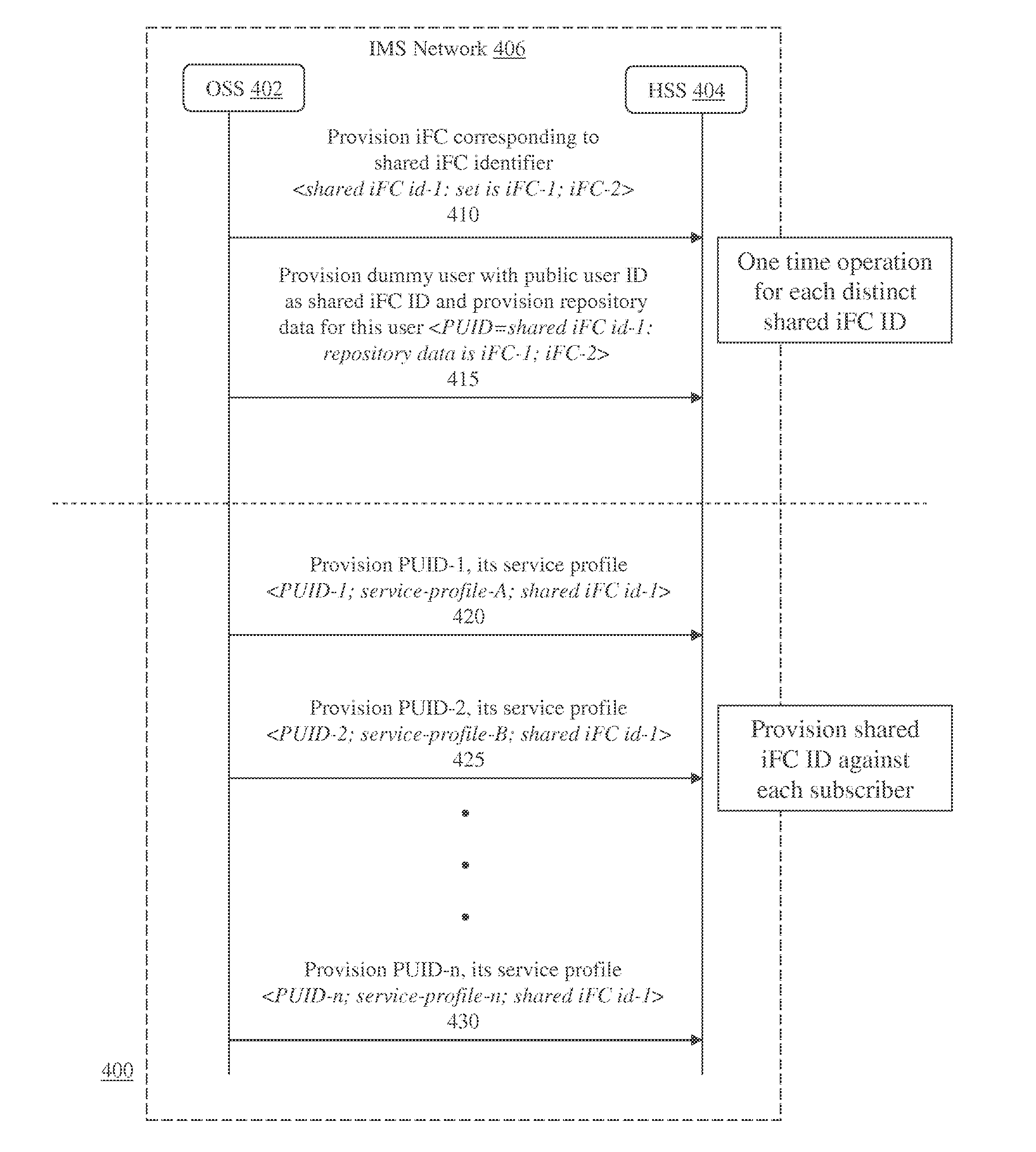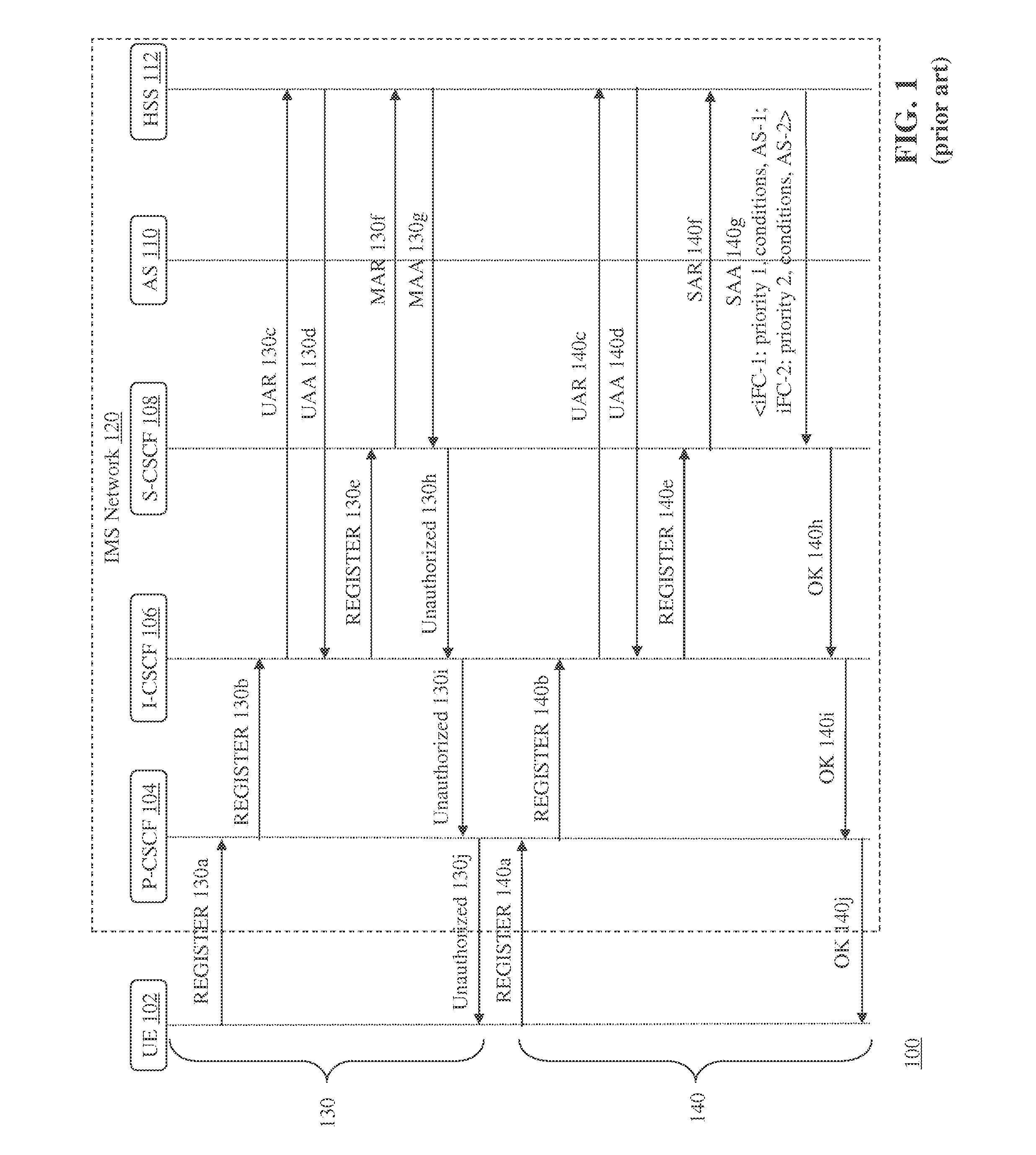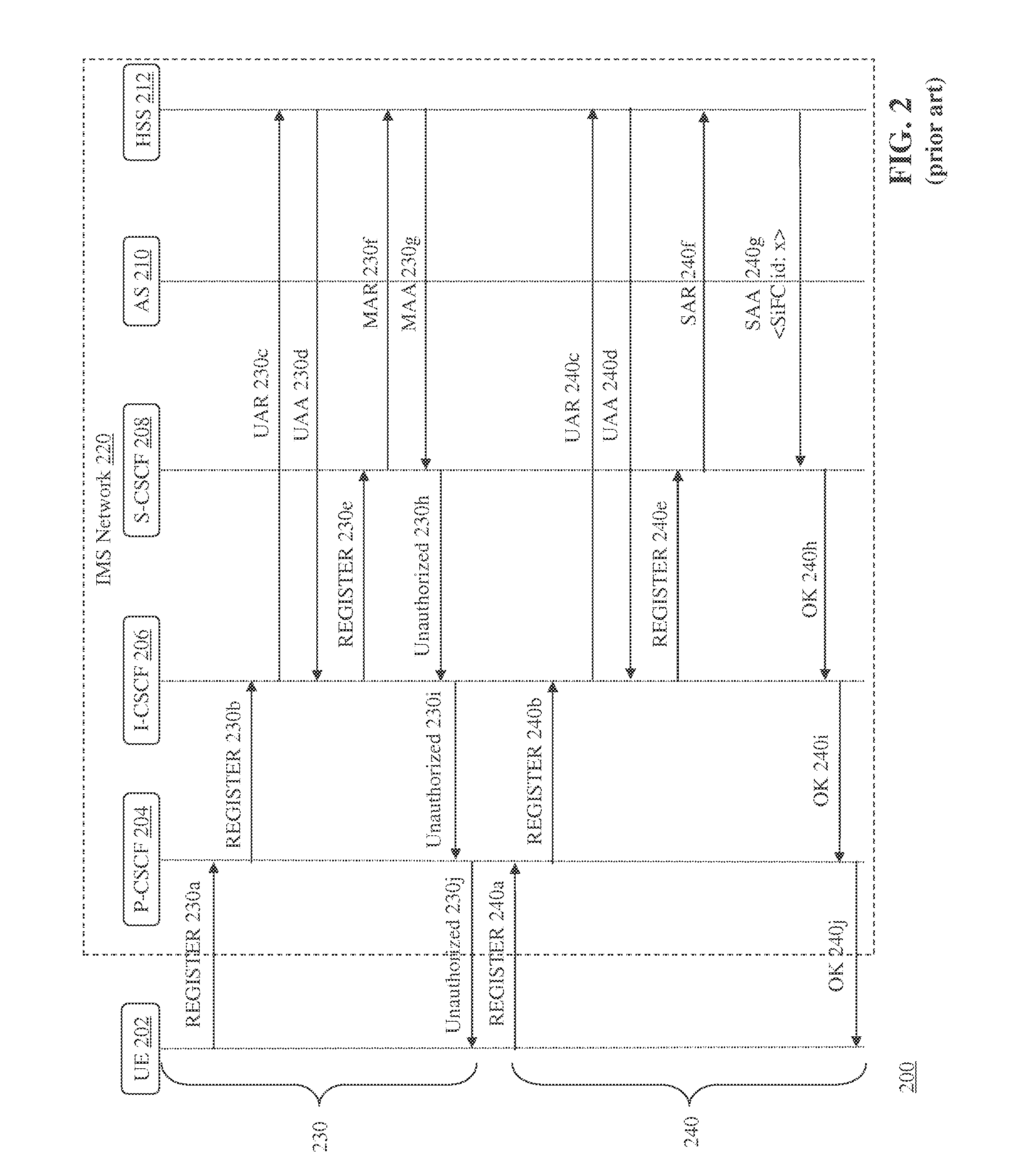Synchronization of Shared Identifiers Across Servers in an IMS Network
a technology of ims network and shared identifier, which is applied in the direction of multiplex communication, time-division multiplex, electrical equipment, etc., can solve the problems of ims standards not defining mechanisms and lack of well-defined provisioning interface in ims, so as to reduce processing overhead, reduce network traffic, and improve network stability
- Summary
- Abstract
- Description
- Claims
- Application Information
AI Technical Summary
Benefits of technology
Problems solved by technology
Method used
Image
Examples
Embodiment Construction
[0043]FIG. 3 is a flow diagram of a process 300 for synchronizing shared identifiers across servers in an IMS network. A first computing device (e.g., a S-CSCF node in an IMS network) transmits (302) a registration request to a second computing device (e.g., an HSS). In some embodiments, the registration request is associated with a remote UE (e.g., a mobile handset) that attempts to connect to the IMS network. The first computing device receives (304) a response to the registration request from the second computing device, where the response includes an identifier associated with a shared initial filter criteria set stored at the first computing device.
[0044]Upon receiving the response, the first computing device determines (306) whether the shared initial filter criteria set corresponding to the received identifier is actually stored at the first computing device. If the first computing device determines that the shared initial filter criteria set is not stored, the first computin...
PUM
 Login to View More
Login to View More Abstract
Description
Claims
Application Information
 Login to View More
Login to View More - R&D
- Intellectual Property
- Life Sciences
- Materials
- Tech Scout
- Unparalleled Data Quality
- Higher Quality Content
- 60% Fewer Hallucinations
Browse by: Latest US Patents, China's latest patents, Technical Efficacy Thesaurus, Application Domain, Technology Topic, Popular Technical Reports.
© 2025 PatSnap. All rights reserved.Legal|Privacy policy|Modern Slavery Act Transparency Statement|Sitemap|About US| Contact US: help@patsnap.com



